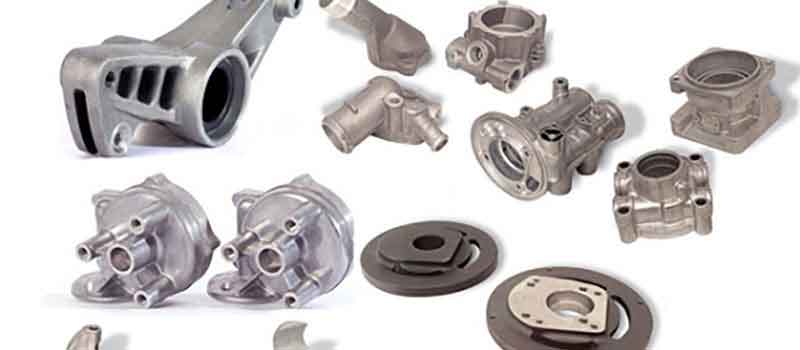Rapid Investment Casting (RIC) integrates 3D printing with traditional investment casting to manufacture complex metal components. This indirect additive manufacturing approach overcomes limitations of direct metal printing—such as material restrictions, high costs, and support removal challenges—while enabling lightweight, topologically optimized structures. By eliminating conventional wax pattern constraints, RIC unlocks unprecedented design freedom for casting parts with intricate internal features. This work establishes an integrated CAD/CAE/CACE methodology for topology-optimized and lattice-based RIC components, validated through structural analysis, process simulation, and experimental prototyping.
Integrated Topology Optimization for RIC Parts
Traditional topology optimization struggles with manufacturability and inefficient post-processing. To address this, we propose an integrated workflow:
- Topology Optimization: Solve density-based problems using SIMP (Solid Isotropic Material with Penalization):
$$ \min_x : C = \mathbf{F}^T\mathbf{U}, \quad \text{s.t.} \quad \mathbf{KU=F}, \quad \frac{V}{V_0} \leq f_v, \quad 0 < x_{\min} \leq x \leq 1 $$
where $C$ is compliance, $\mathbf{K}$ is stiffness matrix, $\mathbf{F}$ is load vector, and $f_v$ is volume fraction. - STL Processing: Convert optimization results to STL meshes, categorized by quality (Table 1).
- Finite Element Validation: Refine meshes and perform preliminary CAE verification.
- CAD Reconstruction: Extract feature curves via reverse engineering for CAD modeling.
| Grade | Characteristics | Post-Processing |
|---|---|---|
| I | High-quality planar surfaces | Direct curve extraction |
| II | Clear boundaries, moderate curvature | Smoothing + fitting |
| III | Blurred edges, low internal curvature | Mesh healing + relaxation |
| IV | High complexity, biomimetic features | Subdivision + refinement |
Applied to an aircraft bearing bracket (Grade IV), this method reduced mass by 74.4% while maintaining structural integrity. Post-optimization stress increased by 37% but remained below yield strength (1000 MPa).
Lattice Topology Design for Enhanced Performance
Lattice structures enable multifunctional casting parts with superior strength-to-weight ratios. We parameterized pyramid unit cells (Figure 1) to analyze geometric influences:
$$ \begin{cases} H = L \cdot \sin \theta \\ B = 2L \cdot \cos \theta \end{cases} $$
where $L$=strut length, $\theta$=strut angle, $R$=cross-section radius. Static compression simulations revealed optimal parameters: $L$=32 mm, $\theta=60^\circ$, $R$=1.5–2.5 mm.

Novel lattice cores (Sinuscross, Shamrock, Star) were designed for sandwich panels and turbine blades. For blade applications, Octahedroid, Hexvase, and Octapeak lattices replaced solid cores while matching external aerodynamics. Thermo-mechanical analysis demonstrated significant improvements:
| Load Case | Metric | Octahedroid | Hexvase | Octapeak | Solid |
|---|---|---|---|---|---|
| Centrifugal | Stress Reduction | 30% | 1% | 12% | Baseline |
| Strain Reduction | 29.3% | 0% | 6.9% | Baseline | |
| Aerodynamic | Stress Reduction | 15% | 13% | 10% | Baseline |
| Deformation Reduction | 51% | 20% | 39% | Baseline | |
| Thermal | Max Temp Drop (°C) | 180 | 66 | 215 | 53 |
RIC Process Simulation and Optimization
ProCAST simulated filling-solidification for topology-optimized brackets and pyramid lattices. For the bracket, a bottom-gating system with risers achieved complete filling in 13 s. Defect minimization used orthogonal experiments (Table 3):
| Run | Pour Temp (°C) | Mold Temp (°C) | Velocity (mm/s) | Shrinkage (%) |
|---|---|---|---|---|
| 8 | 1550 | 700 | 30 | 2.9 |
| 12 | 1580 | 700 | 30 | 3.2 |
| 4 | 1530 | 700 | 30 | 3.8 |
Lattice panels employed vertical slot gates. Dual-slot systems outperformed triple/quad configurations with steadier flow (filling time: 5.3 s) and minimal shrinkage (0.81% volume). Niyama criterion identified critical zones:
$$ \text{Niyama} = \frac{G}{\sqrt{\dot{T}}}, \quad G = \sqrt{ \left( \frac{\partial T}{\partial x} \right)^2 + \left( \frac{\partial T}{\partial y} \right)^2 + \left( \frac{\partial T}{\partial z} \right)^2 }, \quad \dot{T} = \frac{T_{\text{liquidus}} – T_{\text{solidus}}}{t_{\text{solidus}} – t_{\text{liquidus}}} $$
Low Niyama values (<1 °C1/2·s1/2/mm) correlated with shrinkage in lattice junctions.
Conclusion and Future Work
This research demonstrates that RIC enables high-performance casting parts through integrated topology design. The proposed workflow reduces optimization-to-CAD time by 40% while achieving 74.4% mass reduction in structural components. Lattice-infused turbine blades improve thermal dissipation by 306% (Octapeak) and mechanical performance by 51% (Octahedroid). Process simulations confirm dual-slot gating optimal for complex lattices. Future work will investigate multi-physics coupling for turbine blades and residual stress prediction in RIC processes.
